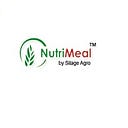Feeding Baled Silage : All You Need To Know
Silage comes in many forms, such as ready-to-eat, packed, or bales. Silage bales are the most common among dairy farmers as these are readily available. First, however, you must know how to unwrap and feed it correctly.
Rules for feeding baled silage
You need to follow these guidelines when feeding Silage Bales to your cattle and ruminants. These guidelines also include what you should never do when feeding baled silage.
- You should ensure that the storage site does not increase the probability of exposure to air. Some storage places increase the likelihood of punctures to the plastic wrap.
· Examples include areas near trees having dropped limbs, rodents, or numerous varmint dens or that are freshly mowed and have coarse weed stubble. Many of these sites make punctures, which remain unnoticed until it is too late.
Ensure that the forage is 50–65% moisture before you wrap and ensile it. Baling the fodder when the crop is too dry is the most typical issue because the field may begin with the proper humidity and end up too dry. Dry forage does not offer the bacteria enough moisture to allow enough fermentation.
· However, it does allow fungi to grow during storage and feeding, which can lead to deterioration. Baling Wheat Silage too wet is less common, but high-moisture silage quickly spoils when exposed to air. You should avoid excessive moisture in the forage, such as little to no wilting before baling, as it may lead to clostridial spoilage or botulism.
Don’t spear or puncture into the bales before feeding. We at Silage Agro recommend the use of squeeze carriers or handlers. But make sure to use this equipment carefully, as the risk of the bales being stretched, torn, or punctured is still there. Any cut in the plastic barrier can lead to small parts or even the entire bales deteriorating.
To feed a bale, which you wrap using an inline wrapper, spear into it, lift, and pull away, which will tear away the plastic between it and the next bale. Next, you need to scissor over the top and peel the plastic cover off in one large section.
· When feeding out a separately wrapped bale, you need to cut a large X in the end, which you will spear and pull back the flaps. In this case, we will penetrate the bale, lift, and slash across the top and down the other flat part, which should peel the plastic off in one piece. You should remove the net wrap or twine before feeding in both scenarios.
Wastage and refusal are rarely an issue when you feed your cows baled silage unless you feed one to too few animals. If the fodder remains after feeding, use a fresh bale for the next intake.
· If you force your cows to eat waste or refused silage, it will lead to poor performance and health issues. You can usually determine and adjust the bale size on the baler.
You should not feed bales you wrapped with an inline baler at least 4–6 weeks after wrapping unless you plan to feed all bales within just a few days.
Never leave the silage uncovered in the air for more than two days during feeding. If the daytime temperature exceeds 60 degrees Fahrenheit, don’t leave it exposed for more than a day.
So now you know everything about feeding baled silage and should be able to feed it to your cattle properly. If you want the best Corn silage For Sale, contact Silage Agro Private Limited.
